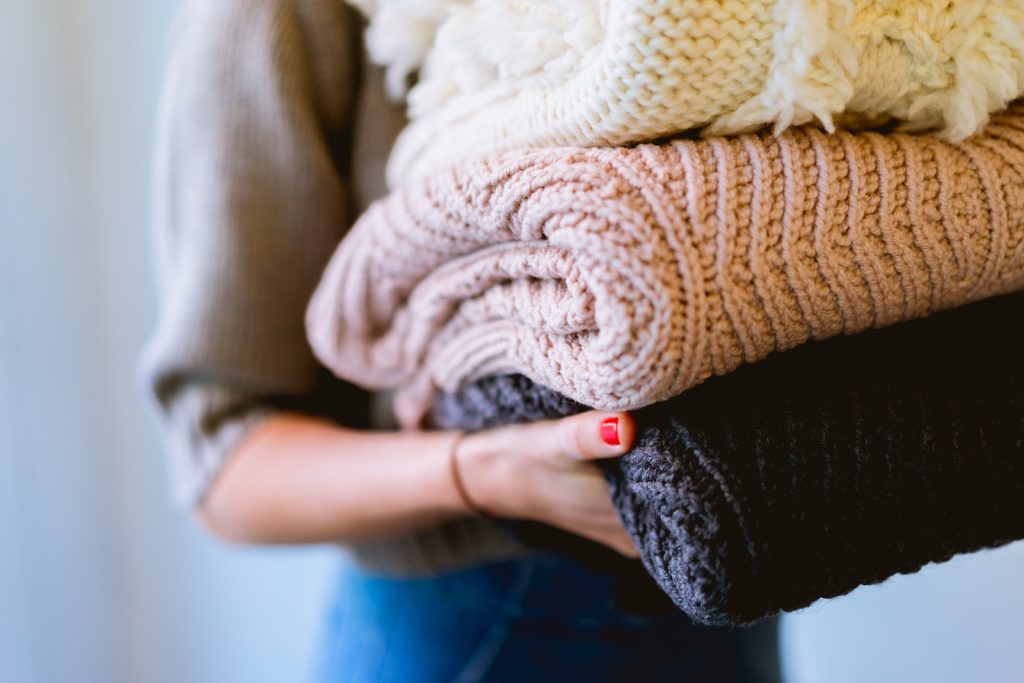In this guide, we will address the commonly asked question: can you wash textiles?. We will also show you the proper techniques for washing textiles in this comprehensive guide. From delicate fabrics to everyday materials, learn how to keep your textiles clean and fresh.
Textiles are an integral part of our daily lives, from our clothing to our household linens. However, when it comes to cleaning them, many people are unsure about the appropriate methods. Can you wash textiles?
The answer is not a simple yes or no. Different types of textiles require different cleaning approaches to ensure they maintain their quality and longevity. In this comprehensive guide, we will delve into the world of textile cleaning and provide you with valuable insights and practical tips for washing a variety of fabrics.
Contents
Understanding Textile Care Labels
Before diving into the specifics of washing different textiles, it’s crucial to understand the information provided on textile care labels. These labels offer valuable guidance on how to clean and maintain specific fabrics. Here are some common symbols and their meanings:
- Machine Wash: A symbol depicting a tub filled with water indicates that the fabric can be machine-washed.
- Hand Wash: A symbol of a hand in a tub indicates that the fabric should be gently hand-washed.
- Dry Clean: A symbol resembling a circle indicates that the fabric should be professionally dry-cleaned.
- Bleach: A triangle symbol filled with diagonal lines signifies whether the fabric can be bleached or not.
- Temperature: A number inside the symbol indicates the recommended washing temperature.
By carefully reading and understanding these care labels, you can determine the appropriate cleaning method for your textiles and avoid potential damage.
Washing Different Types of Textiles
Cotton and Linen
Cotton and linen are popular natural fiber textiles known for their durability and breathability. Here’s how to wash them effectively:
- Check the care label: Most cotton and linen fabrics can be machine-washed, but it’s always best to check the care label for specific instructions.
- Separate colors: Sort your cotton and linen items by color to prevent color bleeding.
- Use a gentle cycle: Select a gentle or delicate cycle on your washing machine to protect the fabric’s integrity.
- Choose the right detergent: Opt for a mild detergent to avoid harsh chemicals that can damage the fibers.
- Air-dry or tumble dry: Cotton and linen can be air-dried or tumble-dried on low heat. Remove them from the dryer while slightly damp to prevent excessive wrinkling.
Silk and Satin
Silk and satin are delicate and luxurious fabrics that require extra care when washing. Follow these steps:
- Read the care label: Check the care label for specific instructions. Some silk and satin items may require professional dry cleaning.
- Hand-wash or use a delicate cycle: If hand-washing is recommended, fill a basin with lukewarm water and a mild silk detergent. Gently agitate the fabric and rinse thoroughly. Alternatively, use a gentle or delicate cycle on your washing machine.
- Avoid wringing or twisting: Never wring or twist silk or satin. Instead, gently squeeze out excess water and lay the fabric flat on a clean towel to dry.
- Iron with care: Use a low heat setting or a silk-specific ironing temperature to remove wrinkles from silk and satin fabrics. Always iron on the reverse side or use a pressing cloth to protect the delicate surface.
Wool and Cashmere
Wool and cashmere are warm and cozy textiles that require special attention to maintain their softness. Follow these tips:
- Check the care label: Some wool and cashmere items may be labeled as “dry clean only,” while others can be hand-washed or machine-washed on a gentle cycle.
- Hand-wash delicately: If hand-washing is recommended, use lukewarm water and a gentle detergent specifically designed for wool. Gently squeeze the fabric, rinse thoroughly, and lay it flat on a towel to dry.
- Machine-wash with care: If machine-washing is allowed, use a wool or delicate cycle with cold water and a mild detergent. Place the garment in a mesh laundry bag to prevent stretching or snagging.
- Avoid excessive agitation: Wool and cashmere are prone to shrinking and felting, so avoid vigorous rubbing or twisting during the washing process.
- Reshape and dry flat: After washing, reshape the fabric to its original form and lay it flat on a towel to air-dry. Avoid hanging wool and cashmere items, as they may stretch or lose their shape.
Synthetic Fabrics
Synthetic fabrics like polyester, nylon, and acrylic are known for their durability and resistance to wrinkling. Here’s how to wash them:
- Check the care label: Most synthetic fabrics can be machine-washed, but it’s essential to check the care label for any specific instructions.
- Use a gentle cycle: Select a gentle or delicate cycle on your washing machine to prevent excessive wear and tear.
- Choose a mild detergent: Use a mild detergent suitable for synthetic fabrics to avoid damaging the fibers.
- Avoid high temperatures: Wash synthetic fabrics in cold or lukewarm water to prevent shrinking or distortion.
- Air-dry or use low heat: Synthetic fabrics can be air-dried or tumble-dried on low heat. Remove them from the dryer promptly to prevent static cling.
Delicate and Sheer Fabrics
Delicate and sheer fabrics like lace, chiffon, and organza require extra caution during washing. Follow these guidelines:
- Check the care label: Delicate and sheer fabrics often require gentle care, so carefully read the care label for any specific instructions.
- Hand-wash or use a delicate cycle: If hand-washing is recommended, fill a basin with cold water and a mild detergent suitable for delicate fabrics. Gently agitate the fabric, rinse thoroughly, and lay it flat to dry. Alternatively, use a delicate cycle on your washing machine.
- Protect fragile details: If your delicate fabric has fragile details like lace or beading, place it in a mesh laundry bag or pillowcase before washing to prevent damage.
- Avoid harsh detergents: Opt for mild detergents formulated for delicate fabrics to preserve their softness and color.
- Avoid direct sunlight: When drying delicate and sheer fabrics, avoid direct sunlight, as it can cause fading or discoloration.
Special Considerations for Washing Textiles

Stain Removal Techniques
Stains are a common concern when it comes to textiles. Here are some tips for effective stain removal:
- Act quickly: Treat stains as soon as possible to prevent them from setting into the fabric.
- Blot, don’t rub: When removing stains, blot the affected area gently instead of rubbing vigorously, as rubbing can spread the stain and damage the fabric.
- Spot testing: Before using any stain removal product, spot test it on a small, inconspicuous area of the fabric to ensure it doesn’t cause discoloration or damage.
- Follow product instructions: Always follow the instructions provided by the stain removal product manufacturer for best results.
Hand-Washing vs. Machine-Washing
Deciding between hand-washing and machine-washing depends on the fabric type, care label instructions, and personal preference. Consider the following:
- Hand-washing: Hand-washing allows for more control over the cleaning process and is often recommended for delicate or fragile fabrics. It’s a gentle approach that minimizes the risk of damage.
- Machine-washing: Machine-washing is convenient and suitable for many fabrics, especially those labeled as machine-washable. However, always use a gentle or delicate cycle and follow the care label instructions.
Drying and Ironing Tips
Proper drying and ironing techniques are crucial for maintaining the quality of your textiles. Here are some tips:
- Air-drying: Whenever possible, air-dry your textiles to avoid the potential damage caused by heat and tumbling in the dryer. Lay them flat or hang them up, depending on the fabric type.
- Tumble-drying: If using a dryer, use the lowest heat setting or a delicate cycle to prevent shrinking, wrinkling, or damage. Remove textiles from the dryer while slightly damp to minimize ironing needs.
- Ironing: Follow the fabric’s care label instructions for ironing temperatures. Use steam or a pressing cloth for delicate fabrics and avoid ironing directly on prints or embellishments.
FAQs About Washing Textiles
Q: Can I wash all textiles at home?
A: While many textiles can be safely washed at home, it’s important to check the care label instructions for specific guidelines. Some delicate or specialty textiles may require professional cleaning.
Q: How often should I wash my textiles?
A: The frequency of washing depends on factors such as fabric type, usage, and personal preference. Generally, items like clothing and bedding should be washed regularly to maintain hygiene and freshness.
Q: Can I use fabric softeners on all textiles?
A: Fabric softeners can be used on certain textiles but may not be suitable for others. Check the care label instructions to determine if fabric softeners are recommended for your specific fabric.
Q: Can I spot-clean textiles instead of washing them entirely?
A: Spot-cleaning can be an effective method for removing localized stains without subjecting the entire textile to a full wash. However, ensure that spot-cleaning products are safe for the fabric type and follow the instructions carefully.
Final Thoughts on Can You Wash Textiles
In conclusion, the answer to “Can you wash textiles?” is a resounding yes, with some considerations. Understanding the care labels, different fabric types, and proper cleaning techniques is essential for maintaining the longevity and quality of your textiles.
Whether you’re washing cotton, silk, wool, or synthetic fabrics, following the specific guidelines for each will help ensure that your textiles remain clean, fresh, and in excellent condition for years to come. By taking the time to care for your textiles properly, you can enjoy their comfort, beauty, and functionality to the fullest.


